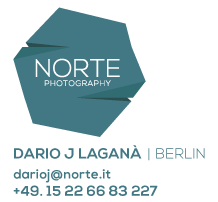PROJECT STATEMENT
My practice is rooted in walking as an artistic method where body, route, and landscape are inseparable. In 2026, I will enter its most intensive phase: a sustained act of walking that I will prepare through months of artistic development. This will take the form of a 3,000 km nomadic journey around Iceland, entirely on foot with a custom-built, solar-powered trolley. Along the way, I will gather photographs, videos, sound recordings, archival pictures of objects, audio and written observations, building a comprehensive artistic archive.
From March to November (8 months), the project will unfold in three phases: trolley further development and research (March-May), the journey (June-Aug), and post-production and reflection (September-November). With dedicated support, I could fully dedicate my attention to it, free from regular photographic assignments as the walk's scale and long-term commitment require sustained financial and structural resources.
Earlier in my career, beginning with a walk on the Orkney Islands 20 years ago, travel served as an unspoken backdrop. I moved through landscapes and societies to take photographs, with the journey's choices, constraints, and demands remaining invisible. In recent years, also with the development of the trolley, my practice has shifted toward a form of field-based research where the act of walking, the encounters along the way, and the states of mind they generate become integral to the work.
This approach is "in itinere", developed during walks of increasing duration: 360 km in the Australian rainforest, 560 km across the Shetland Islands, and 1,000 km through Norway, resulting in the short film Like a fern between rocks, selected for the Frome International Climate Film Festival as time-based visual art.
I took a pause in 2025 to reflect on the deeper frameworks of my practice, engaging with Rebecca Solnit's critiques of heroic narratives in Wanderlust and her vision of walking as "a mode of making the world as well as being in it". This period also allowed me to explore more fully Frédéric Gros' assertion that walking "suspends time, interrupts work, and breaks with everyday routines" (A Philosophy of Walking). Stepping back from the field renewed both my mind and spirit, and I now return with a sharper sense of purpose.
This methodology draws from performance art, site-specific installation, and environmental art, echoing the lineage of artists like Hamish Fulton and also integrating it with Iceland's related environmentalist writers like Andri Snær Magnason, but extending it with a multi-sensory, logbook-building form.
Dedicated support would enable focused preparation in Berlin, finalising the trolley, deepening research, and building collaborations, followed by the clarity and resilience required for the physical and mental demands of the walk.
Such support would provide the freedom to fully dedicate my attention to the project. I intend to build on the continuity of my previous publicly funded works (We will forget soon and Deutschland Übergestern, both supported by the Bundesstiftung zur Aufarbeitung der SED-Diktatur), which were successfully developed into multiple exhibitions (six and four respectively).
The collected materials will form the basis for future artistic projects, with top e.v - Verein zur Förderung kultureller Praxis e.V. (Berlin) having already expressed interest in working with the results. Their space will facilitate the first physical manifestation of the walk's archive as a logbook prototype, where selections of images, sounds and texts interact with the trolley - testing how the material might eventually coalesce into exhibition form.
Given the scale of the project, some collaborations have already started. The preparation phase will also be the occasion to build more of these collaborations.
In my walking practice, I see technology as a quiet ally rather than an intrusion. I work with whatever tools I can build or adapt, from solar power systems to modular engineering, to help me endure the physical demands of long and remote journeys. For the Iceland walk, I will adapt the trolley I designed to carry my equipment with an engine (allowing me to walk hands free), to be used as a shelter and further ideas are scheduled. Even though Hamish Fulton's walks in Iceland remain an important reference for me, especially his focus on the walk as the work, my approach places technology within that frame, using renewable energy and DIY solutions to help me focus more on other topics. In this way the trolley becomes both a survival tool and a companion, bridging the endurance and meditative qualities of walking with the possibilities of contemporary tools and ecological awareness.
The gradual shift toward Arctic environments emerged both from practical necessity, as walking proves easier in colder climates, and personal history: growing up in Naples under Mount Vesuvius' shadow, I've always questioned how other communities coexist with geological forces. This walk will also align with the rare total solar eclipse of summer 2026, a singular moment to experience and document in solitude, to be included in my future works.
As I prepare, I hold these questions for seeing, keeping me awake to what the walk might offer: How will months of walking fracture and reshape time? Is exhaustion a path to discovery or just a romanticized struggle? What remains when everything nonessential falls away? These are not problems to solve but ways of looking that keep the work alive.
Beyond financing, institutional support represents vital recognition, enabling this demanding journey as an open field of artistic inquiry. With such support, I will develop a significant new body of work through months of endurance walking through Iceland's shifting landscapes, laying the foundation for future artistic projects that may include presentations, installations, or other forms of sharing.
Possible main route
Conceptual map built as a reference for the trip
UPDATING THE TROLLEY (V3 _ June 2026)
This new version of the trolley will be packed into two suitcases despite its bulky appearance. It features a new foldable solar panel system composed of two panels, both detachable and rotating around a pivot under the deck, allowing adjustment based on the sun's direction.
The solar panel frame is also detachable at both the front and back and supported by a foldable structure made from walking sticks. When disassembled, the components collapse into a compact square. The electricity generated travels through cables beneath the frame directly to the motor.
This trolley includes a top-accessible bag for personal belongings and a removable box that opens from the top and sides. On each side, standard bicycle panniers provide additional storage and can be easily detached. The main structure, including the collapsible box, is designed for minimal bulk. Underneath, a soft water tank with a capacity of approximately five or six liters is stored for emergencies.
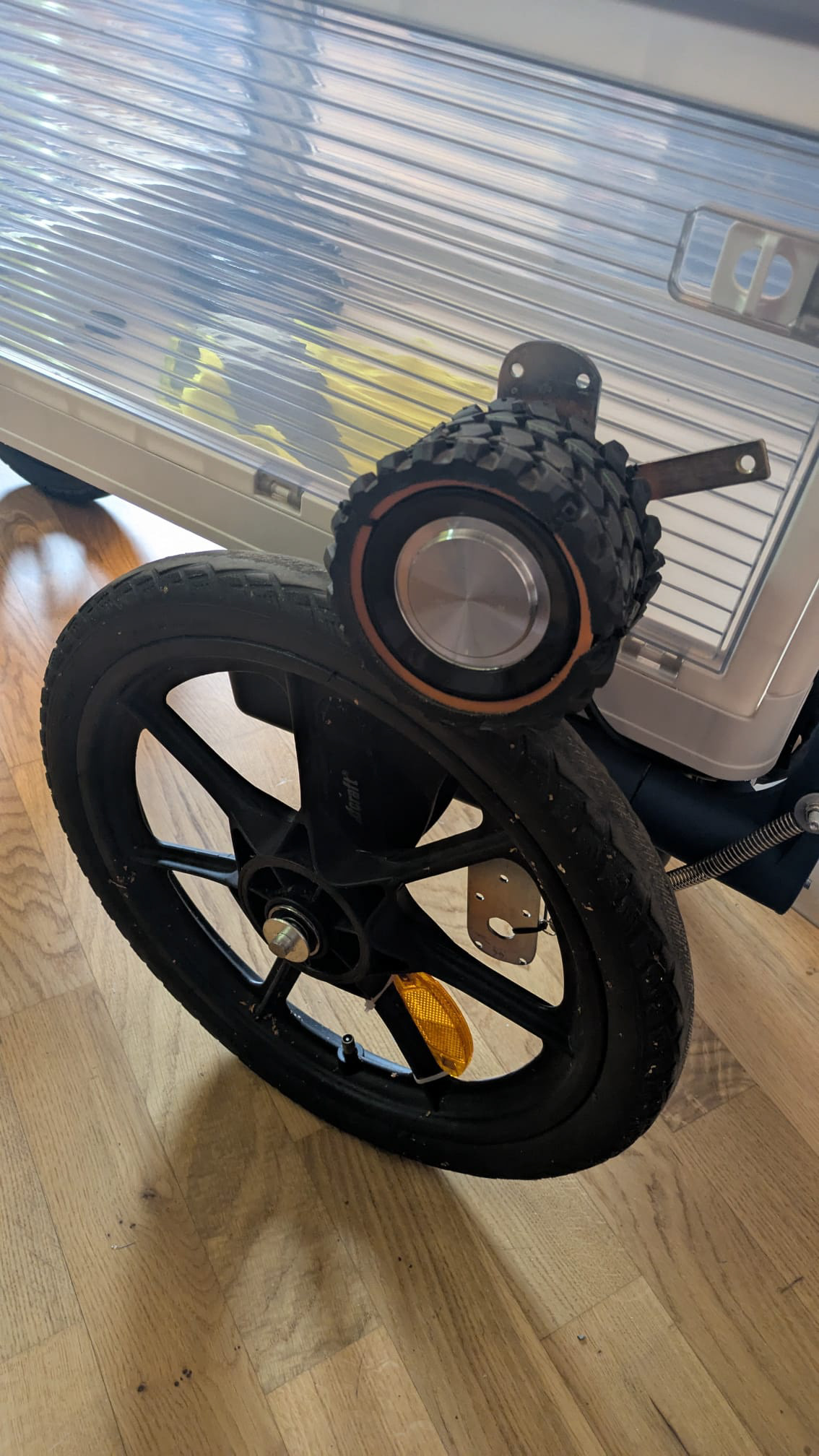
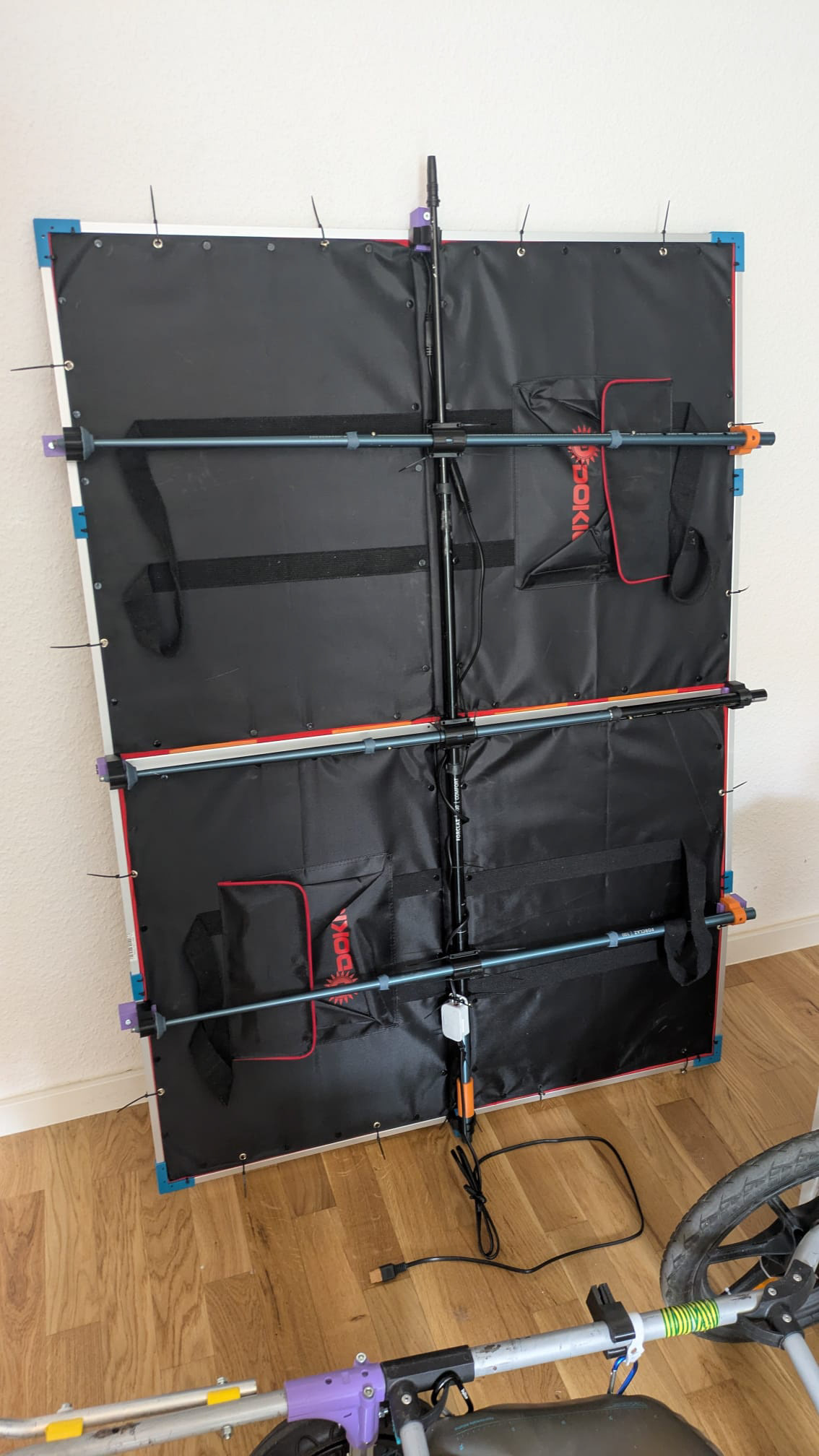
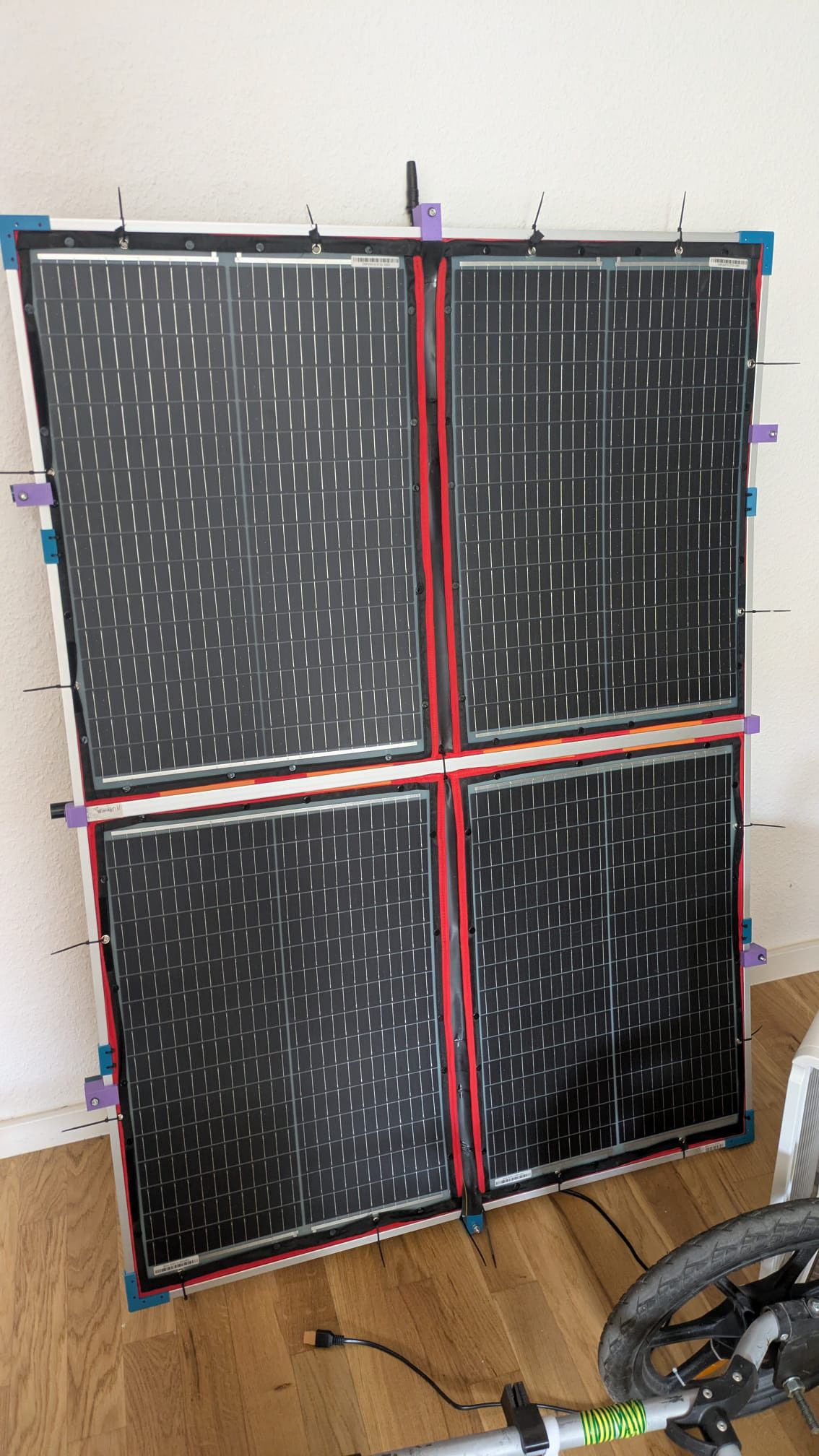
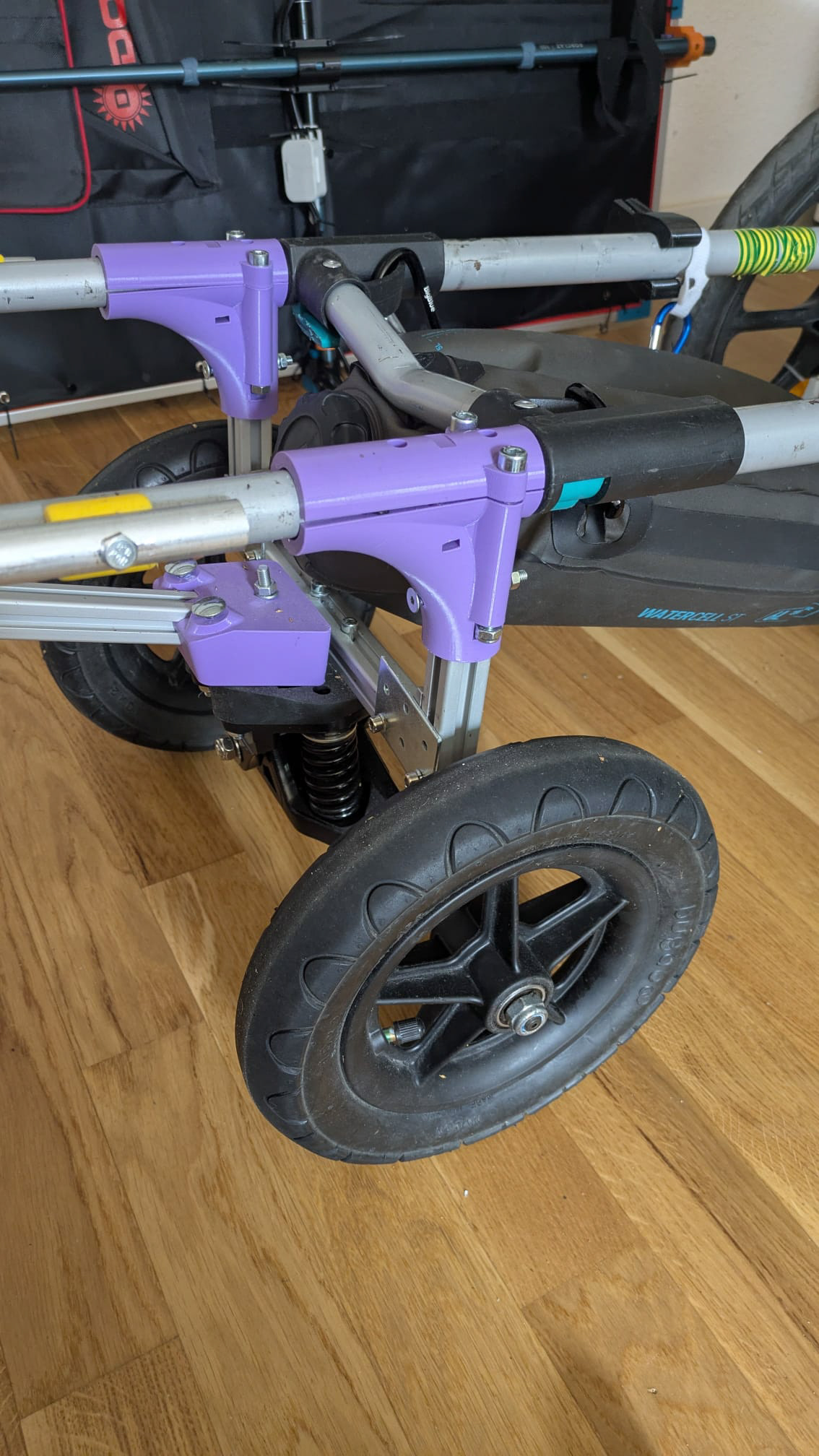



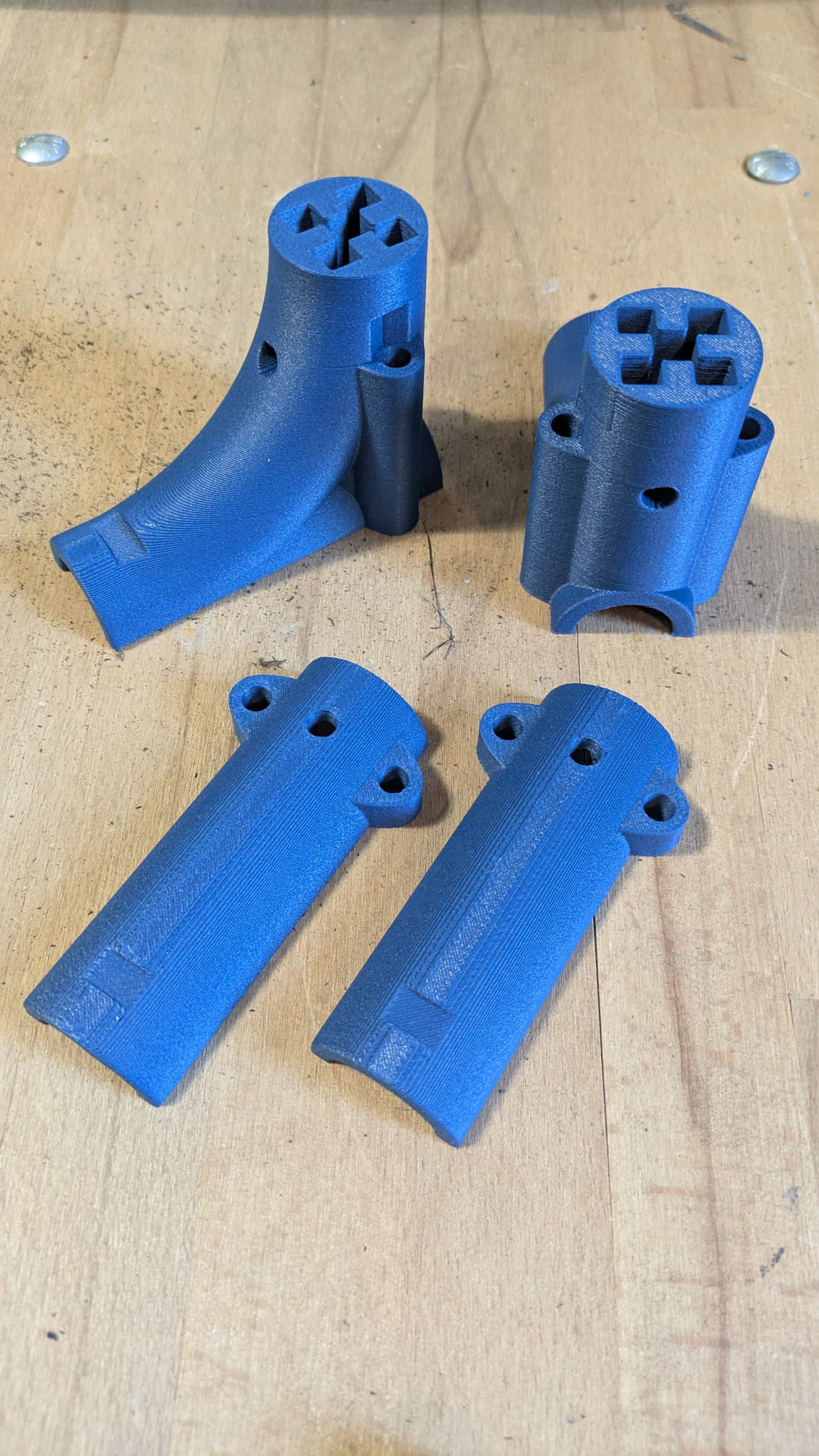
A major innovation in this design is the drive system, which uses a repurposed electric skateboard motor mounted on a smaller wheel that presses against the main wheel. When the smaller wheel spins, it drives the larger one through direct contact. After extensive prototyping and numerous failures, I found the most effective method involved rubber-on-rubber contact between the wheels. This setup reduces erosion and is durable over time.
A critical challenge I encountered in previous versions was a lack of friction in wet conditions. In Norway, rain caused the drive wheel to slip. To address this, I introduced a spring mechanism that applies constant pressure between the two wheels. The pressure is adjustable, and the system now performs reliably even when wet.
The front section of the trolley has also been significantly improved. Previously, I used a central double wheel, which destabilized the trolley and frequently broke. I replaced it with two smaller wheels, similar to those found on baby strollers, which offer greater strength and stability. I also incorporated a shock absorption system inspired by skateboard trucks, which enhances performance over uneven terrain and curbs.
The trolley’s center of gravity is now lower, improving overall stability. I modified the final section of the walking stick support using a thicker aluminum tube, bent at approximately 30 degrees to provide ergonomic alignment from hand height to hip level during use.
The electronics are housed beneath the deck in a waterproofed toolbox located under the solar panel array. Airline regulations prohibit carrying electric bike batteries due to their power and lithium content. However, power tool batteries are allowed, so I use those instead. These batteries are charged by the solar panels through a charge controller and supply power to the motor via a control unit.
Last year, due to time constraints, I made some errors in preparing for my trip. This time, I started the elecronics system from scratch, collaborating with others to correct past mistakes, now is simple, reliable, and modular. I can remove the box, transport it separately, and recharge the batteries using either solar energy or a standard power outlet at a campsite or other facilities.
